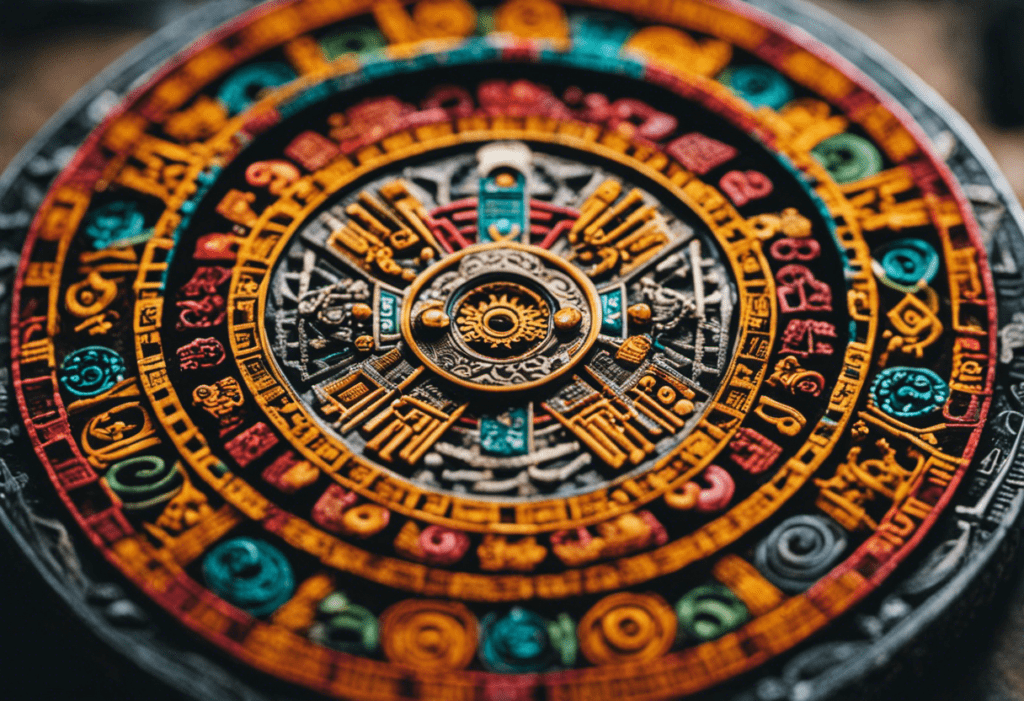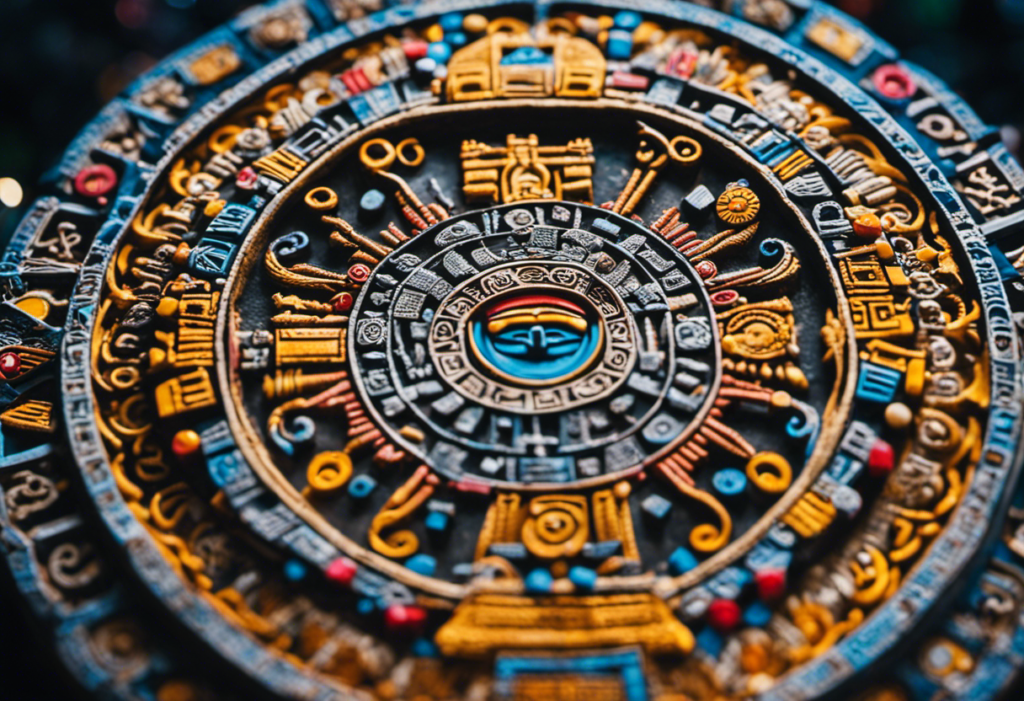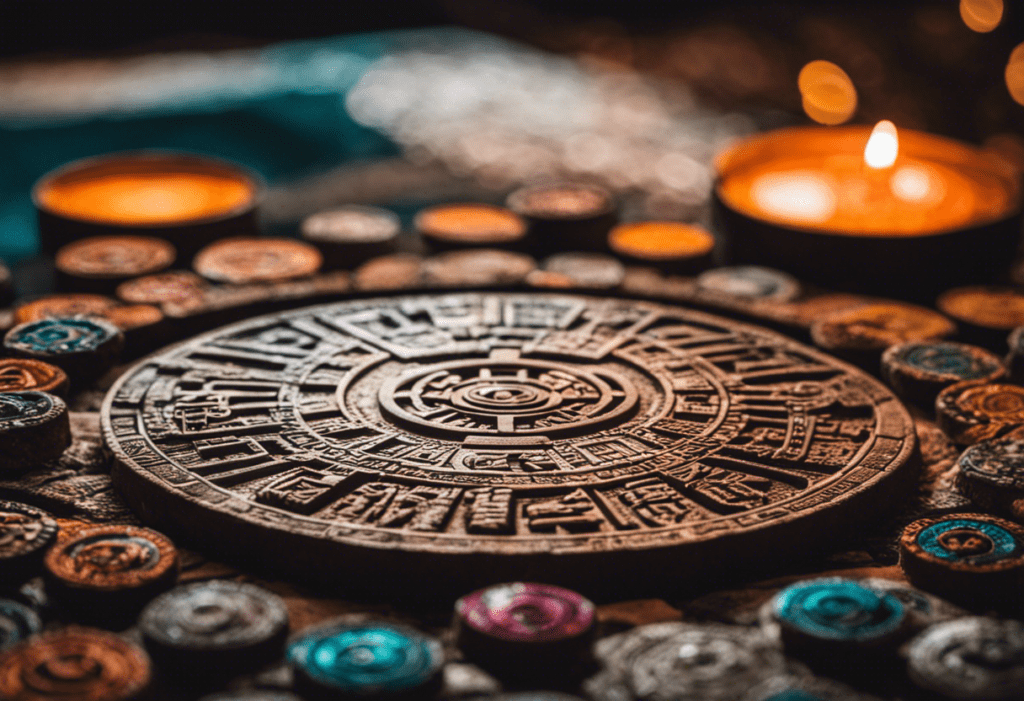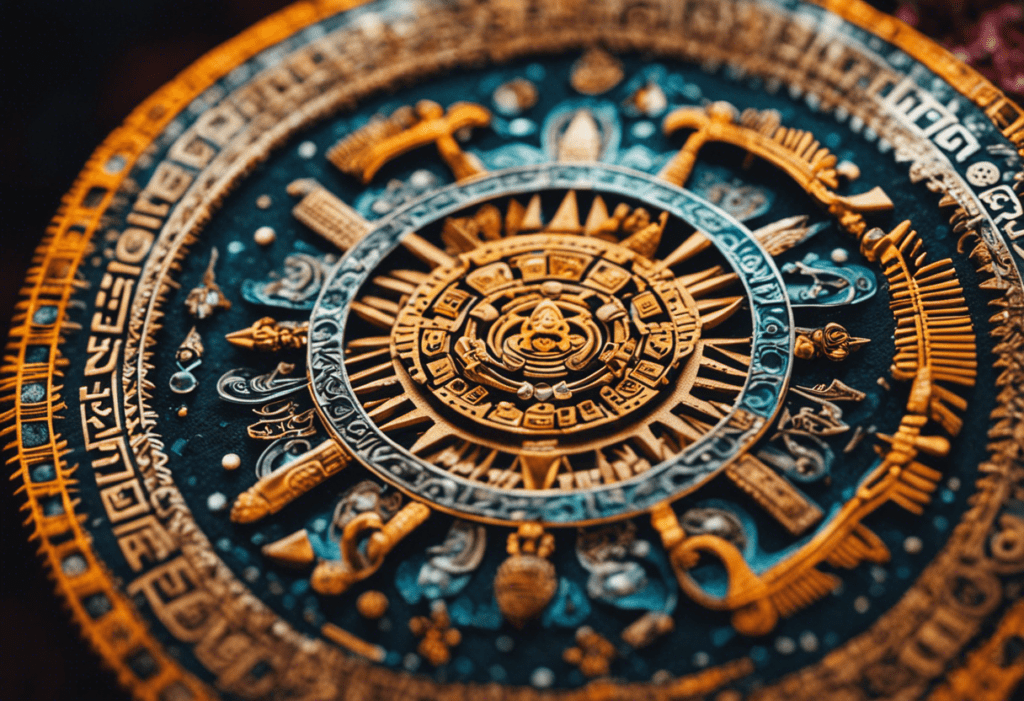The Aztec calendar, a remarkable feat of ancient engineering and intellectual prowess, exerted a profound influence on every aspect of Aztec society and rituals.
Its intricate system, known as the Tonalpohualli, not only measured time but also dictated religious ceremonies, guided agricultural practices, shaped social events, organized government affairs, determined festival timing, and even influenced naming traditions.
This article delves into the fascinating ways in which the Aztec calendar shaped the very fabric of Aztec civilization, providing a comprehensive understanding of its immense impact.
Key Takeaways
- The Tonalpohualli, a 260-day calendar system, played a crucial role in Aztec society and rituals.
- The calendar was considered sacred and used for divination practices, influencing personal characteristics, destiny, and the suitability of activities.
- It played a significant role in religious ceremonies and rituals, determining the timing of worshiping specific gods and performing human sacrifices.
- The calendar also influenced agricultural practices, guiding the timing of planting, harvesting, and other agricultural activities, ensuring sustainable land use and maximizing crop yields.
The Tonalpohualli: An Ancient Calendar System
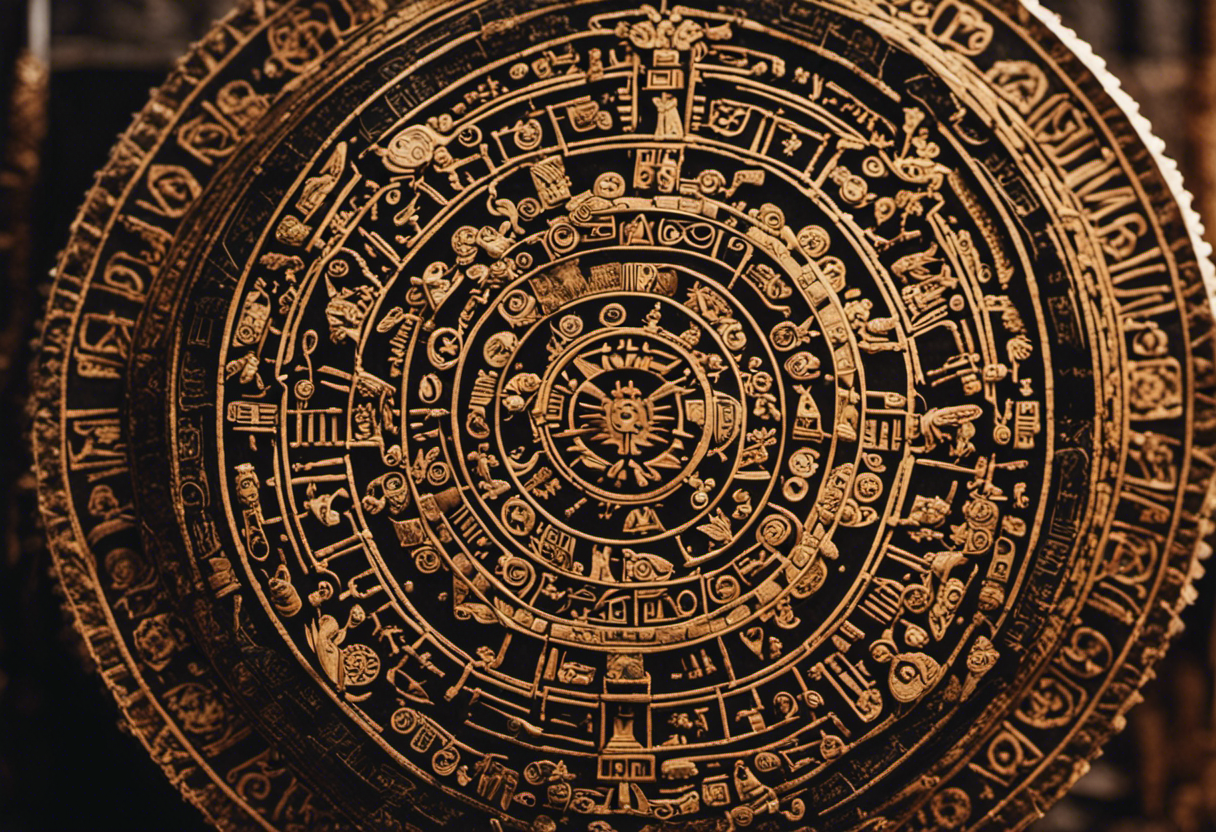

The Tonalpohualli served as a significant tool for tracking time and organizing religious and agricultural activities in Aztec society. This ancient calendar system played a crucial role in shaping the lives of the Aztec people, influencing their daily routines, rituals, and beliefs.
The Tonalpohualli was a 260-day calendar that consisted of 20 periods, each containing 13 days. It was based on a combination of two cycles: a 13-day cycle and a 20-day cycle.
The Tonalpohualli was deeply rooted in ancient traditions and was considered a sacred calendar by the Aztecs. It was believed to hold immense power and was used for divination practices, allowing individuals to predict and interpret future events. The combination of the 13-day and 20-day cycles created a unique system where each day was associated with a specific combination of a number and a sign. These combinations were believed to have a profound influence on various aspects of life, including personal characteristics, destiny, and the suitability of certain activities or events.
Furthermore, the Tonalpohualli played a crucial role in organizing religious ceremonies and agricultural activities. It guided the timing of festivals, sacrifices, and other religious rituals, allowing the Aztecs to maintain a close connection with their gods and ancestors. Additionally, it helped in determining the most auspicious times for planting, harvesting, and other agricultural practices, ensuring the success and prosperity of their crops.
Religious Ceremonies and the Aztec Calendar
Numerous religious ceremonies were intricately tied to the Aztec calendar, playing a significant role in the spiritual beliefs and practices of the Aztec society. The Aztec calendar, with its complex system of timekeeping, influenced almost every aspect of daily life for the Aztecs, including their religious rituals. The calendar was seen as a divine tool, connecting the mortal world to the spiritual realm.
One of the most important religious ceremonies was the New Fire Ceremony, known as the Xiuhmolpilli. This ceremony marked the end of a 52-year cycle in the calendar and was celebrated with great pomp and grandeur. The Aztecs believed that the world would come to an end if the New Fire was not lit at the proper time, so it was a highly significant event. The ceremony involved extinguishing all fires and then creating a new fire by friction. This new fire was used to light torches and then distributed to the people, symbolizing the renewal of life and the continuation of the world.
Another significant religious ceremony tied to the Aztec calendar was the Feast of Toxcatl, a month-long celebration dedicated to the god Tezcatlipoca. During this festival, a young man was chosen to impersonate the god and was treated as a divine figure. This ceremony was believed to ensure the fertility of the land and the abundance of crops.
The Aztec calendar also dictated the timing of other important religious ceremonies, such as the worship of specific gods and the performance of human sacrifices. The calendar helped the Aztecs determine which deities to honor on specific days and guided them in their spiritual practices.
Agricultural Practices and the Aztec Calendar
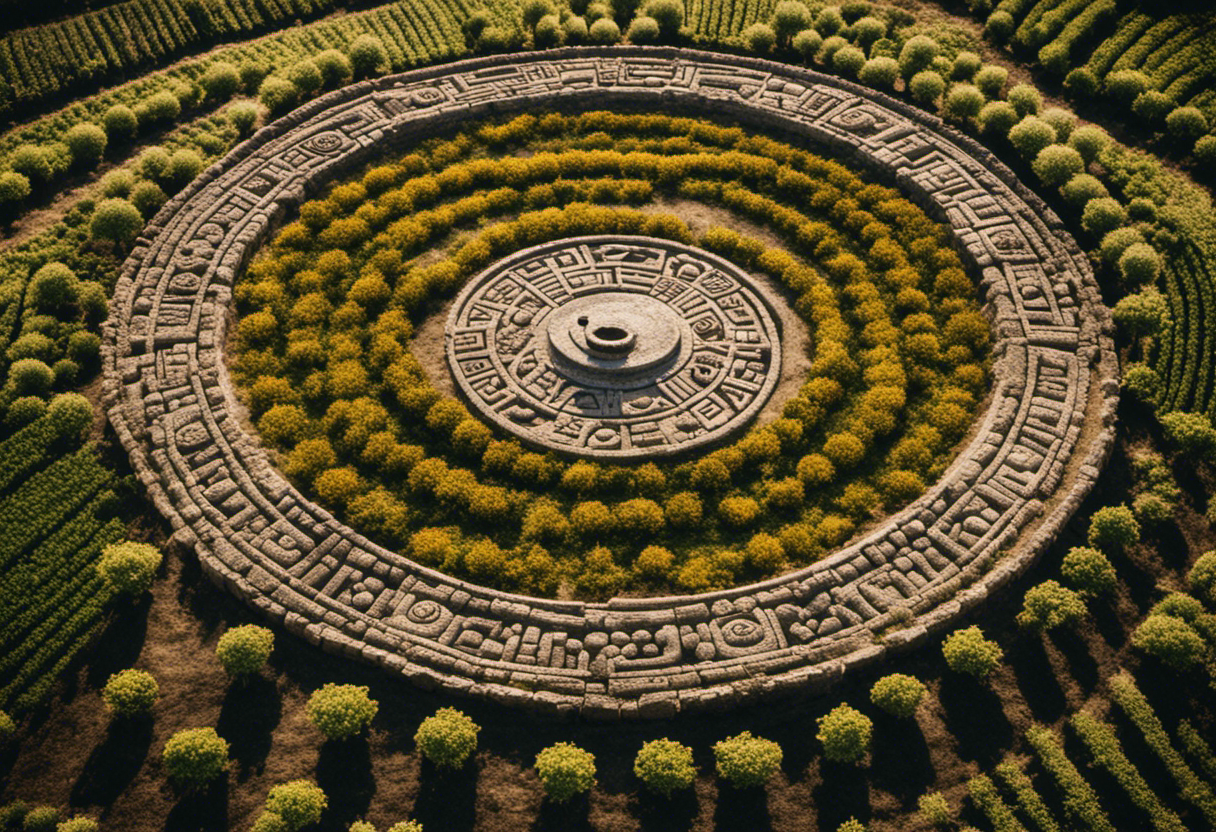

During the reign of the Aztecs, agricultural practices were intricately tied to the Aztec calendar, as it guided the timing of planting, harvesting, and other important agricultural activities. The Aztecs were highly skilled in agriculture and developed sophisticated farming techniques to sustain their growing population. One such technique was crop rotation, which allowed for sustainable and efficient land use.
Crop rotation was a key agricultural practice employed by the Aztecs. They divided their agricultural lands into three main categories: wetlands, drylands, and hillside terraces. Each category had its own specific crops, and the Aztecs would rotate the crops between these categories to maintain soil fertility. This practice ensured that the soil had enough time to replenish its nutrients and prevented the depletion of vital resources.
The Aztec calendar played a crucial role in determining the timing of crop rotation. The calendar was based on a combination of solar and ritual cycles, and its accurate tracking of time allowed farmers to know when to start planting different crops. By aligning their agricultural activities with the calendar, the Aztecs maximized their crop yields and ensured the availability of food throughout the year.
Furthermore, the Aztec calendar also guided the timing of other important agricultural practices, such as irrigation, fertilization, and pest control. The calendar provided a framework for organizing these activities, ensuring that they were carried out at the most favorable times for optimal agricultural productivity.
Social Events and the Aztec Calendar


While the Aztec calendar primarily guided agricultural practices, it also played a significant role in shaping social events and ceremonies within Aztec society. Here are three ways in which the Aztec calendar influenced social events:
1) Aztec calendar and marriage customs: The Aztec calendar influenced the timing and rituals associated with marriage in Aztec society. The calendar was consulted to determine auspicious dates for weddings, taking into account celestial alignments and the significance of specific days in the calendar. Additionally, the calendar was used to determine the compatibility of the couple based on their birth dates and the corresponding calendar signs.
2) Aztec calendar and community celebrations: The Aztec calendar structured the timing of community celebrations and festivals. These events were often tied to important calendar dates and were marked with elaborate ceremonies, music, dancing, and offerings to the gods. The calendar ensured that these celebrations were aligned with the agricultural cycle, honoring the deities responsible for the fertility of the land and the success of the harvest.
3) Aztec calendar and religious ceremonies: The Aztec calendar played a central role in religious ceremonies and rituals. The calendar determined the timing of important religious festivals, such as the Feast of the Gods or the New Fire Ceremony. These ceremonies were crucial for maintaining the cosmic order and ensuring the well-being of the community. The calendar guided priests and religious leaders in performing the appropriate rituals and offerings on specific dates, based on the complex interplay between the calendar signs and celestial events.
Government Organization and the Aztec Calendar
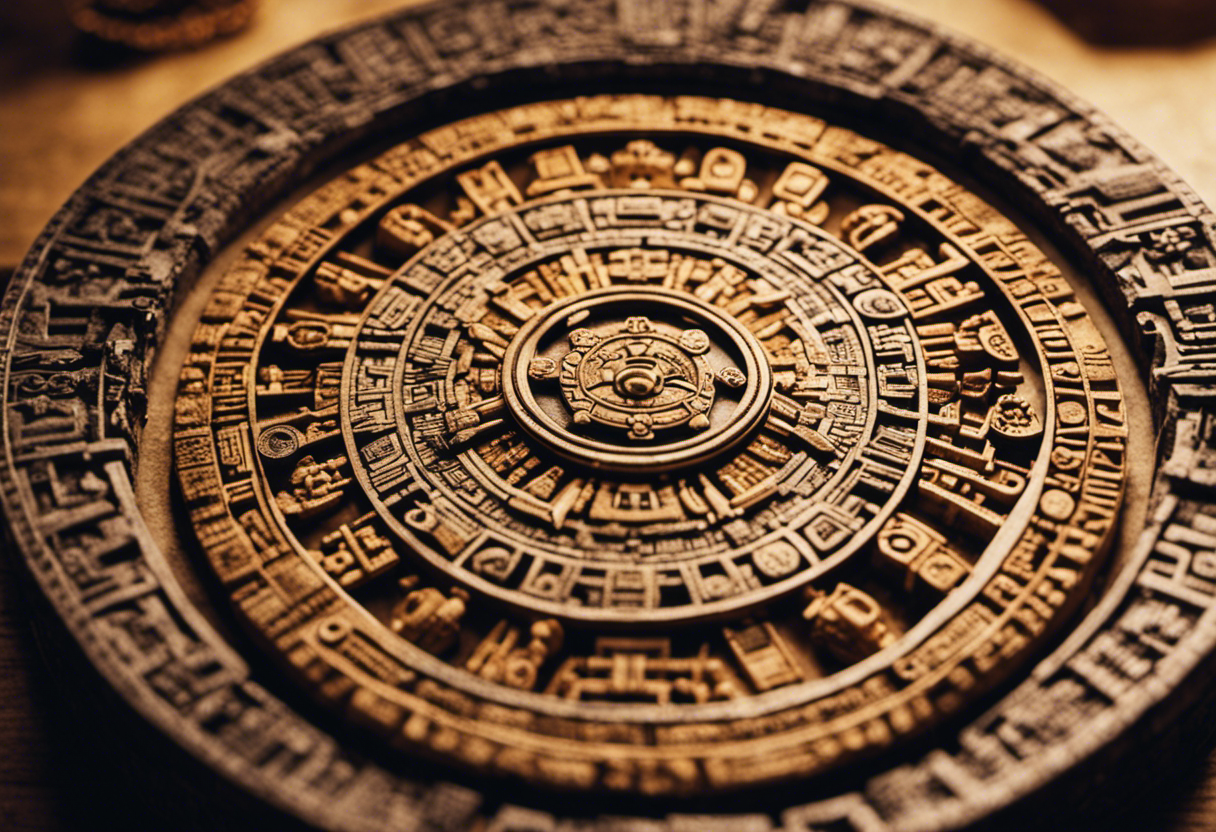

The efficient functioning of the Aztec government relied heavily on the integration of the Aztec calendar into its organizational structure and decision-making processes. The calendar played a crucial role in government organization by providing a framework for scheduling and coordinating various administrative activities. It helped the government keep track of important events, such as religious festivals, agricultural cycles, and military campaigns, which were essential for the stability and prosperity of the empire.
The Aztec calendar also influenced economic activities within the empire. The calendar’s agricultural cycle, known as the xiuhpohualli, guided the timing of planting, harvesting, and other agricultural tasks. By aligning their agricultural practices with the calendar, the Aztecs were able to ensure a steady supply of food for their rapidly growing population.
Furthermore, the calendar’s ritual cycle, called the tonalpohualli, played a significant role in economic decision-making. It was believed that each day in the tonalpohualli had its unique energy and characteristics, which could influence the success or failure of economic ventures. As a result, the Aztec government and merchants often consulted the calendar to determine auspicious dates for trade, commerce, and business negotiations.
Festival Timing and the Aztec Calendar


Aztec festivals, intricately woven into the fabric of Aztec society, were meticulously timed according to the cycles and interpretations of the Aztec calendar. The Aztec calendar consisted of two interdependent systems: the tonalpohualli, a 260-day ritual calendar, and the xiuhpohualli, a 365-day solar calendar. These calendars played a crucial role in determining the timing and nature of cultural celebrations and rituals.
Festivals aligned with astronomical events:
The Aztecs believed that celestial events influenced the earthly realm, and therefore, many festivals were timed to coincide with significant astronomical occurrences. For example, the festival of Huey Tozoztli marked the beginning of the rainy season and was celebrated when the Pleiades cluster aligned with the zenith in the night sky.
Cycles and patterns:
The Aztec calendar provided a structured framework for organizing festivals. By following the cycles and patterns of the calendar, the Aztecs ensured that important festivals occurred at regular intervals. For instance, the festival of Panquetzaliztli, dedicated to the god Huitzilopochtli, was held every 52 years, marking the completion of a full cycle in the Aztec calendar.
Ritualistic significance:
The timing of festivals in the Aztec calendar was not arbitrary but held deep ritualistic significance. The alignment of specific dates and events with the cycles of the calendar was believed to enhance the spiritual power of the rituals and ensure the favor of the gods. Festivals were often accompanied by elaborate ceremonies, offerings, and sacrifices, all carefully orchestrated according to the calendar’s timings.
Naming Traditions and the Aztec Calendar
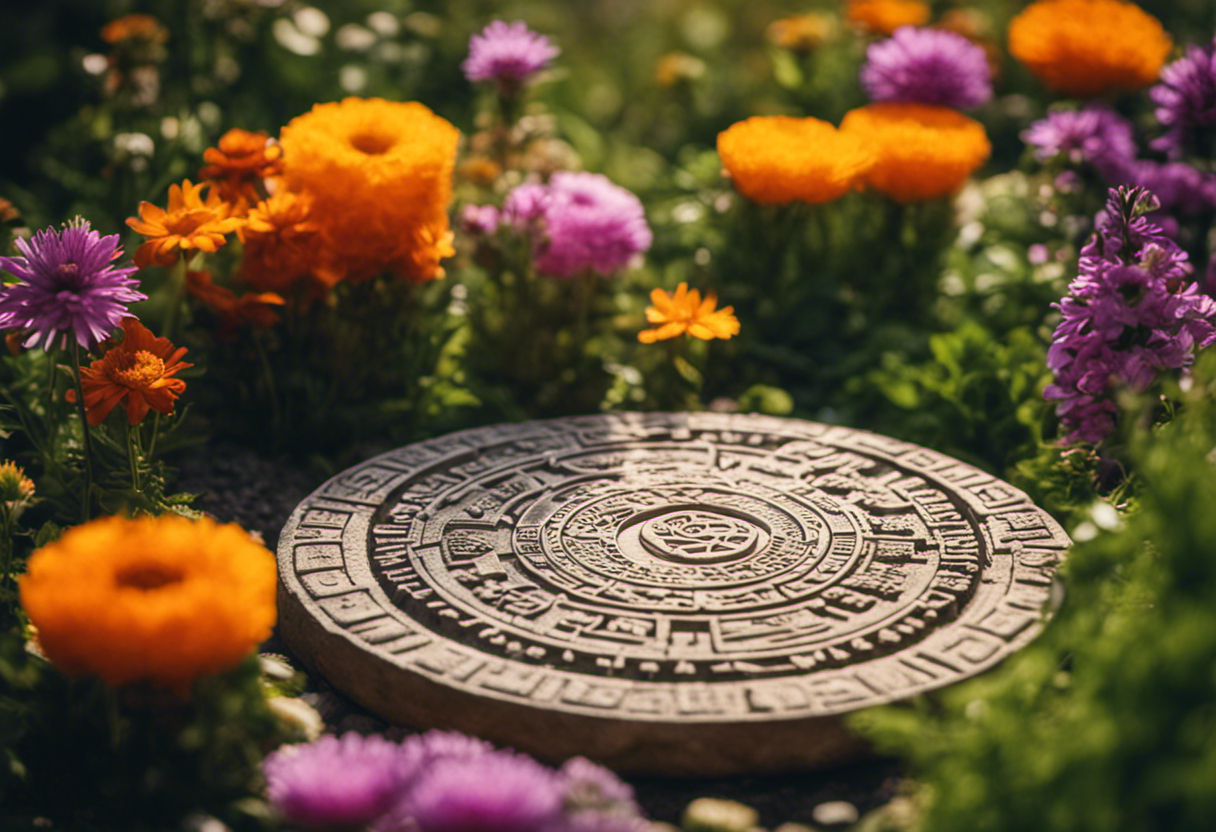

The Aztec calendar played a significant role in the naming traditions of the Aztec society. Names were often chosen based on the day or month of the Aztec calendar on which a person was born.
This practice not only served as a way to identify individuals but also held ritualistic and social significance. The calendar was deeply intertwined with Aztec rituals and ceremonies.
Calendar as Naming Guide
Interestingly, the Aztec calendar served as a comprehensive guide for naming traditions within Aztec society. The calendar, with its complex system of symbols and meanings, provided a framework for parents to choose meaningful names for their children. Here are three ways in which the Aztec calendar influenced naming traditions:
- Symbolic Meanings: Each day of the Aztec calendar had a specific meaning associated with it. Parents would choose names that reflected the qualities or characteristics associated with the day their child was born. For example, a child born on a day associated with bravery might be named Cuauhtémoc, meaning ‘falling eagle.’
- Divine Connections: The Aztecs believed that each day was ruled by a specific deity. Parents would often choose names that honored or invoked the protection of these deities, thus strengthening the child’s cultural identity.
- Generational Names: The Aztecs also practiced the tradition of passing down names through generations. By using the calendar as a guide, parents could ensure that the names they chose for their children aligned with the family’s ancestral lineage and cultural heritage.
Rituals Tied to Calendar
Rituals tied to the Aztec calendar included naming traditions that were deeply integrated into the fabric of Aztec society. The Aztecs believed that names held great significance and were a way to connect individuals to the cosmos.
According to their calendar, each day was associated with a specific deity or natural element, and individuals would often be named after these cosmic entities. For example, children born on the day associated with the god Quetzalcoatl might be named Quetzalli or Quetzalcoatl.
These naming traditions not only reflected the Aztec’s reverence for their deities but also served as a means of honoring and preserving their cultural heritage. Additionally, these rituals were often celebrated through elaborate ceremonies and feasts, further highlighting the importance of the Aztec calendar in their cultural celebrations.
Social Significance of Names
Within Aztec society, names held a profound social significance due to their connection to the Aztec calendar and its associated deities. The cultural implications of Aztec naming traditions can be seen in the way names were chosen and bestowed upon individuals.
Here are three key aspects of the role of names in Aztec social hierarchy:
- Social Status: Names were often chosen to reflect the family’s social standing, with noble families selecting names that conveyed prestige and power. The use of titles and honorifics in names further reinforced social hierarchies.
- Religious Beliefs: Names were also influenced by Aztec religious beliefs and the worship of specific deities. Certain names were associated with particular gods or goddesses, reflecting the family’s devotion and connection to the divine.
- Community Identity: Names not only reflected individual identities but also served to reinforce community bonds. Shared naming conventions within a family or community helped to establish a sense of belonging and solidarity among its members.
Conclusion
In conclusion, the Aztec calendar played a significant role in shaping Aztec society and rituals. It served as a guide for religious ceremonies, agricultural practices, social events, government organization, festival timing, and even naming traditions.
This ancient calendar system provided a framework for the Aztecs to structure their lives and connect with the spiritual realm. Its influence was deeply ingrained in every aspect of their culture, leaving a lasting impact on the Aztec civilization.

